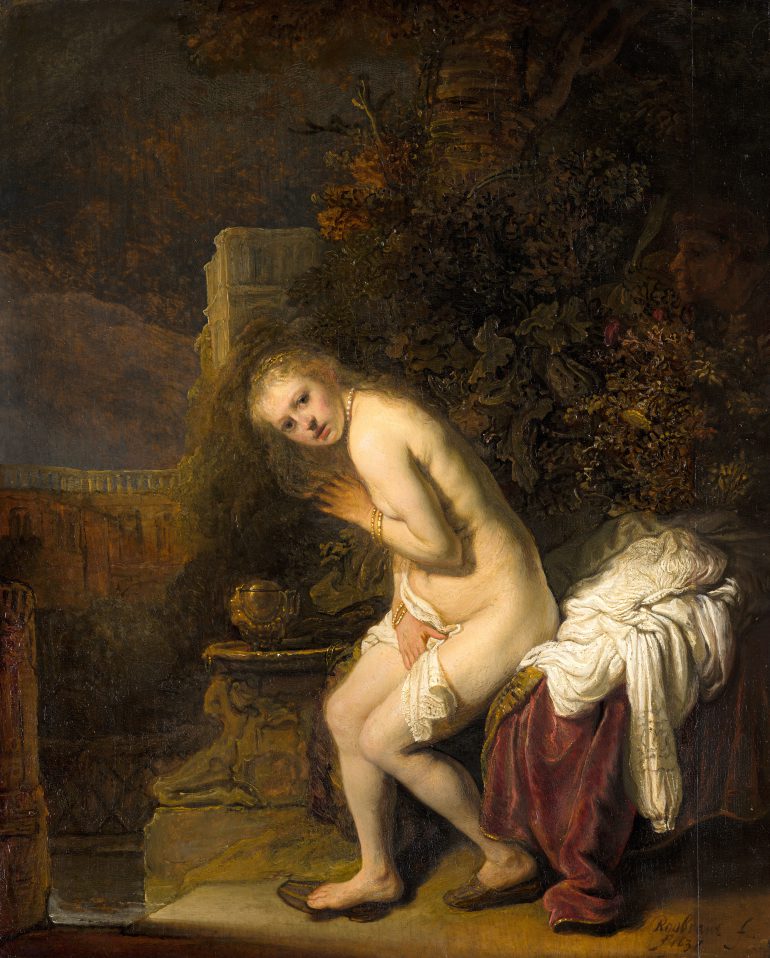Rembrandt was a master storyteller, not with words but with images. To tell stories, he made use of techniques also used in the theatre. This included a clear and conscious choice for the best moment in a story to depict: the moment of greatest tension. Rembrandt House Museum, the only museum in the world completely dedicated to Rembrandt, highlights in the exhibition Directed by Rembrandt for the first time, the artist’s role as a director of his artworks. One of the artworks in the exhibition centres around the apocryphal Bible story about Susanna, painted by Rembrandt in 1636, which is poignant and still relevant today.
The honourable Susanna is married to a rich man, Joachim. When one day Susanna takes a bath in the garden, she is spied on by two powerful men, both elders. They whisper to her that they want to have sex with her. She refuses, and the elders’ revenge is merciless: they claim that Susanna has cheated on her husband and the court sentences her to death. But young, clever Daniel requests the judges to question the two men separately. The men give conflicting statements, which is how their lie comes to light. As a result, they, instead of Susanna, are put to death.
Many artists seized on Susanna’s story to paint a graceful, naked, helpless woman, but Rembrandt was more interested in the psychology of this person. Therefore, he made conscious choices in the way he directed his scene based on dramatic principles. He used the spoken word as a catalyst. Susanna has just undressed. While she is taking off her slippers, she hears the men whisper. She realizes that she is being watched and covers her body with her hands. But she also realizes what is being said to her. She looks startled, her mouth slightly open. As her body changes position, turning towards the danger, her fate also changes: the dramatic turning point.
Rembrandt focuses entirely on Susanna. The elders are barely visible in the bushes, while Susanna catches the sunlight mercilessly, showing her vulnerability. However, Rembrandt also involves us in the drama by having Susanna’s gaze cross that of the viewer, activating our sense of empathy. What will we do? Warn her? Help her? Or do we become voyeurs ourselves; or simply turn around and walk away? The painting is a masterful act of direction by Rembrandt, because it doesn’t get much more uncomfortable than this.
Directed by Rembrandt
Until 26 May 2024
Rembrandt House Museum
Jodenbreestraat 4
Amsterdam
Open daily from 10:00 to 18:00.
